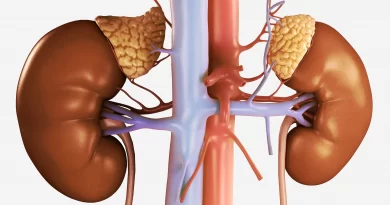Alternative Medicines for Pudendal Neuralgia Treatment
Abstract
Neuralgia refers to a condition in which a person suffers from characteristic shooting pain. This pain is the result of irritation or damage to localized nerves in any part of the body. But, Pudendal neuralgia particularly affects pelvis and genitals. The pain in pudendal neuralgia usually comes and goes but making using bathroom, having sex and sitting down really hard. Pudendal is basically the name of a nerve that runs from the back of the pelvis near the base of penis or vagina. From here it branches off into other nerves, it sends messages from genitals and anus to the brain. It also controls the sphincter muscles that open and close when you use the bathroom. In this article we will discuss about the pudendal nerve, causes for it’s damage, symptoms produced due to nerve damage and how pudendal neuralgia can be managed using ayurvedic formulations.
Introduction
The pudendal nerve is considered as the main nerve of perineum. It carries signals to the external genitals, skin around the anus and also supplies to the various pelvic muscles in both of the sexes. The muscles which are supplied includes urethral sphincter and external anal spinchter. The damage to this nerve is generally noticed during childbirth and hence fecal incontinence can be noticed. The pudendal canal carrying prudential nerve is called an alcock’s canal. This nerves runs down in pairs that means one from right and one from the left side of the body. Pudendal nerve is often blocked using anesthesia and this block is termed as saddle nerve block. This block is a common obstetric procedure used to anesthetize perineum during childbirth. Now let us understand the causes which trigger the damage or irritation of the pudendal nerve.

Causes of Pudendal Neuralgia
The pudendal nerve can be stretched or compressed, resulting in temporary or permanent neuropathy. The trigger factors for damage or irritation can be unilateral (involving one side) or can be bilateral (involving both sides). The irreversible damage to this nerve generally happens when it is stretched more than 12% of its length or more. This amount of stretch to nerve can only happen when the pelvic floor is either acutely over stretched or chronically over stretched.
- Acutely extended pelvis can be the result of prolonged or difficult childbirth.
- Chronic straining during defecation (generally by constipated patients).
The damage to the pudendal nerve is commonly seen in Alcock canal syndrome. This syndrome is very common in professional cyclists.
Another reason for the damage of the pudendal nerve is vastly related to systemic disorders like diabetes and multiple sclerosis. In both conditions the myelin sheath of nerves is damaged causing irritation of nerve while sitting, standing, having sex and also while using bathroom. Due to a pelvic tumor or surgery following removal of a surgical tumor can cause permanent damage to the pudendal nerve either unilaterally or bilaterally. Day to day causes may include wrong methods of stretching during yoga, performing squats with heavy weights, lifting heavy weight while performing leg exercises in the gym, trying uncomfortable positions while having sex, slipping on floor of bathroom, fracture of pelvic floor etc.
Symptoms of Pudendal neuralgia
The symptom in this type of neuralgia includes both local as well as radiating symptoms.
- The first and the frequently representing feature patients usually complains of is pain in perineum or genitals followed by unexplained numbness. In males the pain is present at the base of penis and in females it is present in the vagina or in the perineum. The character of pain is sharp, stabbing, pricking and shooting. The severity varies according to compression or damage to the nerve.
- Burning hot pain is noticed by patients in the pelvic or lower back area.
- Pain in buttocks that can radiate to legs till feet.
- In females dyspareunia (painful sex) is generally observed.
- Numbness in the pelvic floor that radiates towards the genitals.
- Feeling of presence of swelling
- Frequent use of the bathroom due to fecal incontinence.
- Other symptoms may include sweating, increased heart rate, raised blood pressure, agitation or anxiety.
Diagnosis
It is diagnosed using certain criteria
- Pain in pudendal territory.
- Pain worsens on sitting
- Patient not woken up in night due to pain
- No objective sensory loss on clinical examination.
- To be more sure an MRI can be performed showing either compression or damage to the pudendal nerve.
Preventive measures to avoid pain exacerbation
- Avoiding excessive cycling, horse riding, dancing, less sitting or bending, jumping, excessive core muscle exercises.
- These Activities can be swapped with repeated walking on flat surfaces, swimming, upper body exercises along with gliding exercises.
- You must also avoid straining, trying uncomfortable positions during sex and sitting with crossed legs.
Treatment of Pudendal neuralgia
- The treatment or management of this condition usually involves physiotherapy exercises, hot and cold compresses, topical ointments to reduce pain, painkillers.
- Lifestyle modifications include avoiding causative factors, quit smoking, avoid drinking, avoid cycling etc.
- Ayurveda manages this condition in a different way. It is believed that the tridoshas vitiation is responsible for pudendal neuralgia and the predominant part is played by vata and pitta. Due to this vitiation damage to nerves are generally observed associated with vataj type of pain (pricking, shooting, stabbing). This type of neuralgia is manageable using ayurvedic herbs that can pacify the vitiated doshas and relieves symptoms.
Planet Ayurveda which is a herbal manufacturing unit provides formulations that are manufactured using potent herbs. These formulations are efficient at managing conditions like pudendal neuralgia. The products offered by Planet Ayurveda for the management of pudendal neuralgia are as follows:
- Ashwagandha Capsule
- Chandanadi Vati
- Kaishore Guggul
- Chandraprabha Vati
- Kamdudha Ras Moti Yukt
- Boswellia Curcumin

1. Ashwagandha Ccapsules
Ashwagandha (Withania Somnifera) is called as king of herbs and is known for its efficiency for body strengthening. It acts as a nervous tonic and enhances physical stamina. It is a natural rejuvenator that helps to maintain and nourish the tissues, muscles and nerves. It also pacifies tridoshas.
Dose: One capsule twice a day after meals.
2. Chandanadi vati
The chandanadi vati is an excellent formulation that has shveta chandana (Santalum album), amalaki (Emblica officinalis), maricha (Piper cubera) and many other potent herbs as its ingredients. It helps in building a strong immune system and protects nervous sheath from degradation.
Dose: Two tablets twice a day after meals.
3. Kaishore guggul
Kaishore guggul is formulated using different herbs like guduchi (Tinospora cordifolia), ginger (Zingiber officinale), pippali (Piper longum) and many more. As the name suggests it also has guggul resin (Commiphora mukul) as its ingredient which is very effective in pacifying vata. This classical formulation purifies blood and stabilizes pitta also and thus reduces symptoms like burning pain in pelvis that radiates to the groin.
Dose: Two tablets twice a day after meals.
4. Chandraprabha Vati
Chandraprabha Vati helps in relaxing the stretch in the pudendal nerve and reduces the tenderness. It is a classical herbal formulation that has guggul resin (Commiphora mukul), amalaki (Emblica officinalis), Haridra (Curcuma longa) and many more efficient herbs as its ingredients. As the name suggests chander means moon and prabha means glow, which indicates that this formulation increases the glow of the body by strengthening its immunity.
Dose: Two tablets twice a day after meals.
5. Kamdudha ras moti yukt
It helps in relieving perineal pain in females and maintains a healthy reproductive system. This formulation is very effective in balancing pitta and reduces numbness radiating to the groin region in females.
Dose: Two tablets twice a day after meals with water.
6. Boswellia curcumin
Boswellia curcumin is the combination of two herbs shallaki (Boswellia serrata) and Haridra (Curcuma longa). Both of these herbs help in reducing inflammation which is generally the result of compression or systemic disorders like diabetes or systemic sclerosis. The capsules also provide an analgesic effect and soothes the lining of nerves.
Dose: Two capsules twice a day after meals.
Contact my assistant to provide you the costing / ordering and delivery information at – costing.planetayurveda@gmail.com or call at +91-172-5214030 Or Check Website – www.PlanetAyurveda.com
Conclusion
Pudendal Neuralgia can be very painful and has many various symptoms. Once when a patient is diagnosed with this condition, then avoidance of causative factors become a must. The products offered by Planet Ayurveda for this condition are really effective and provide you with noticeable results without any side effects.






